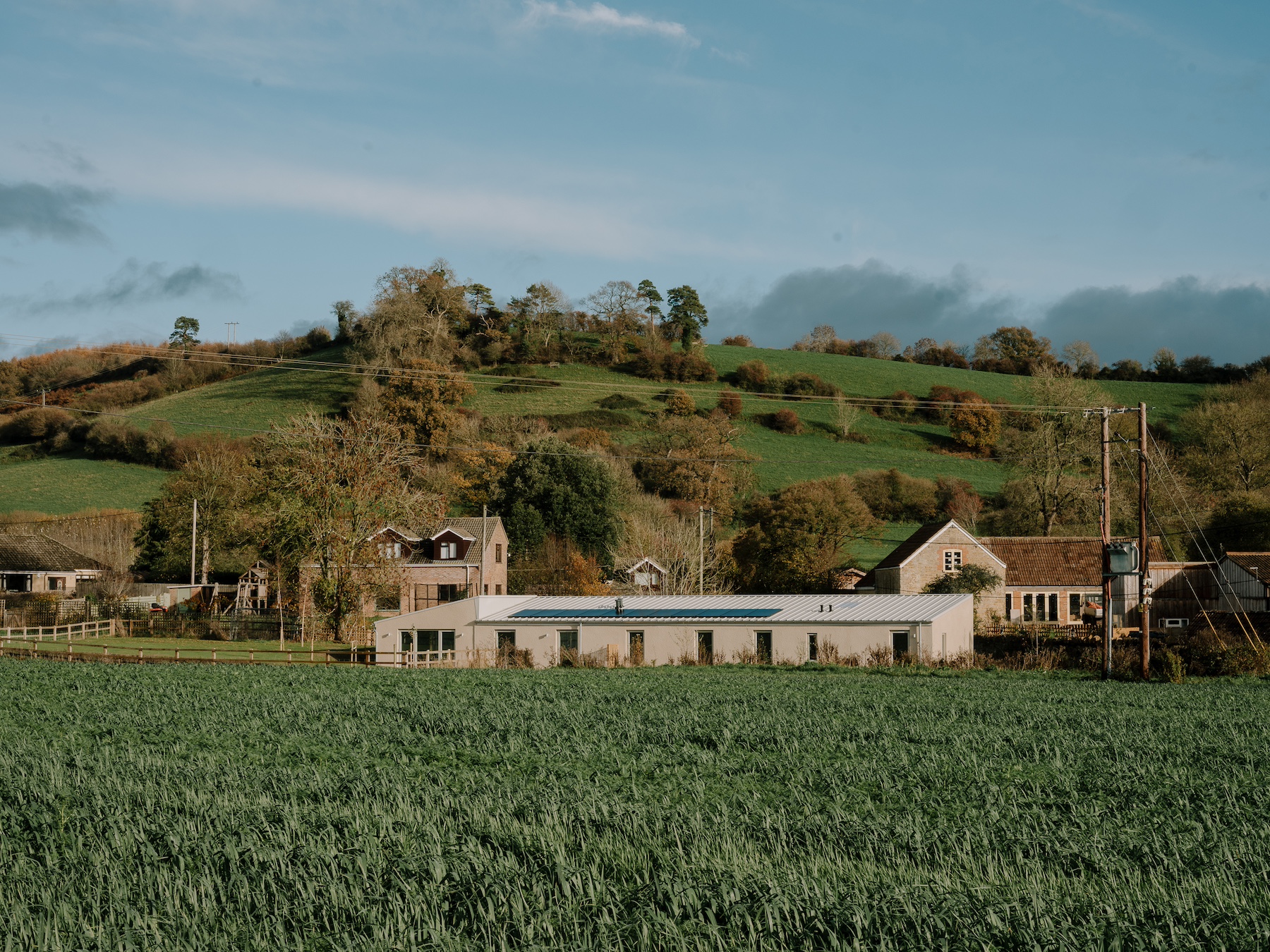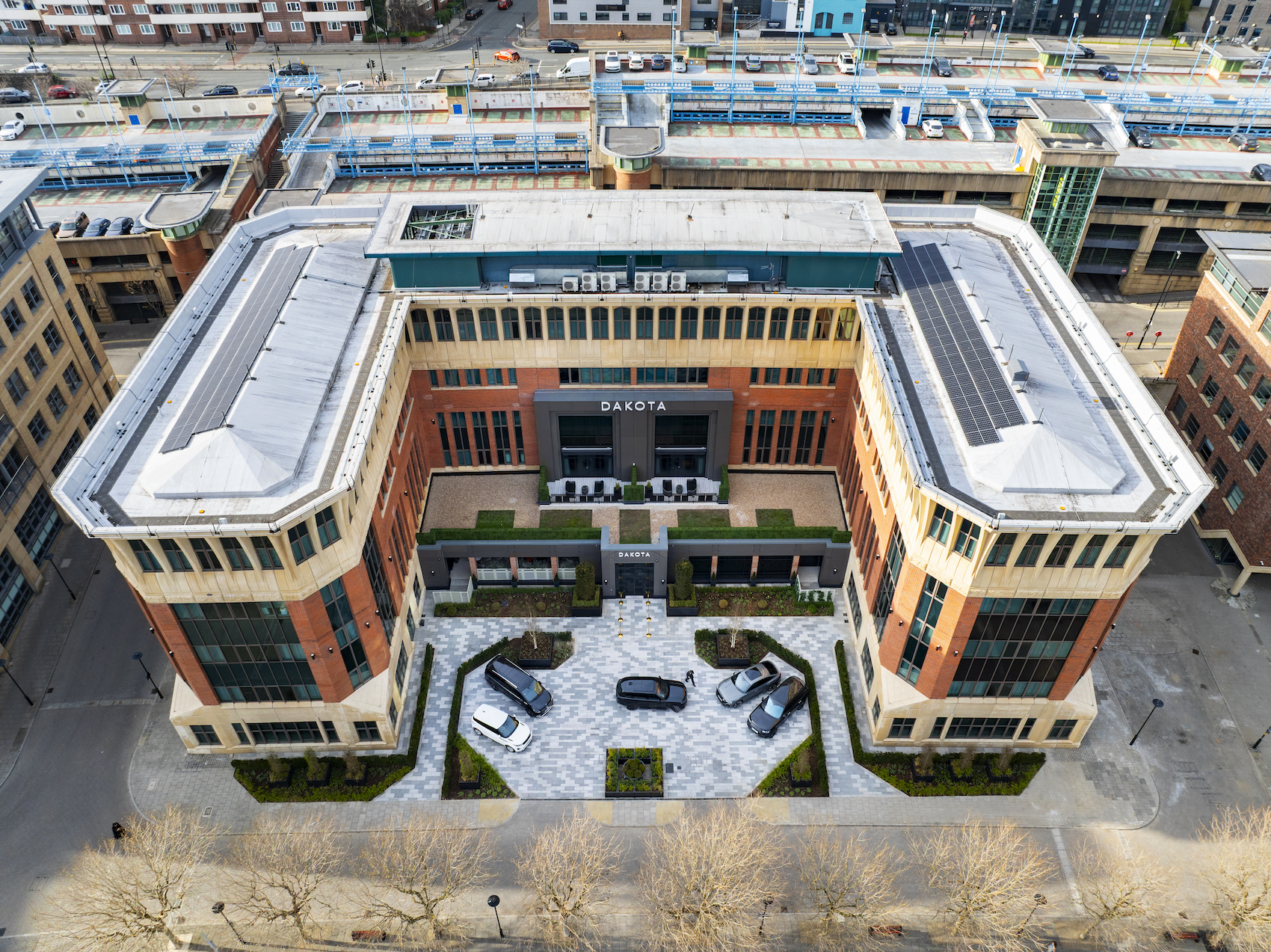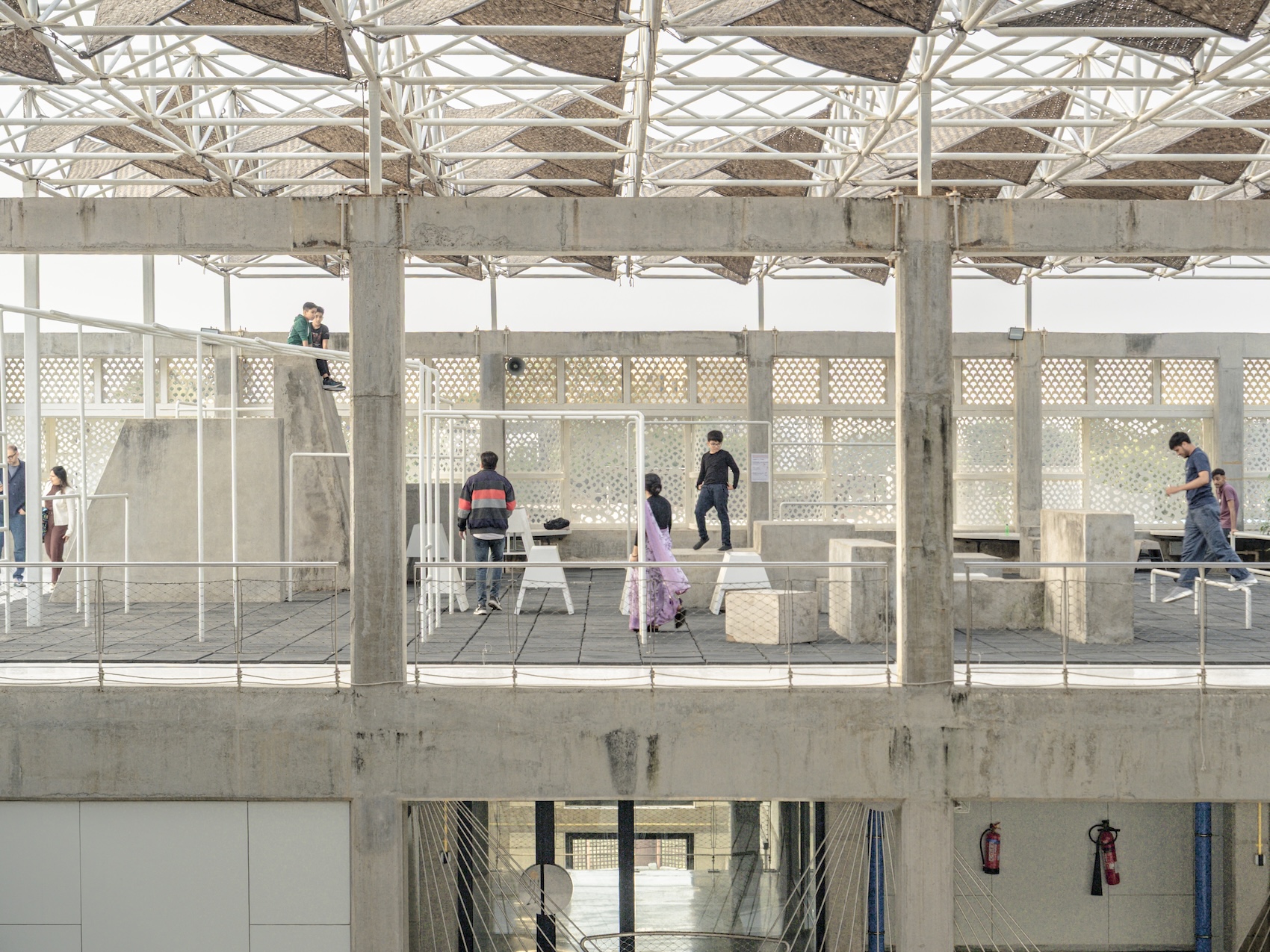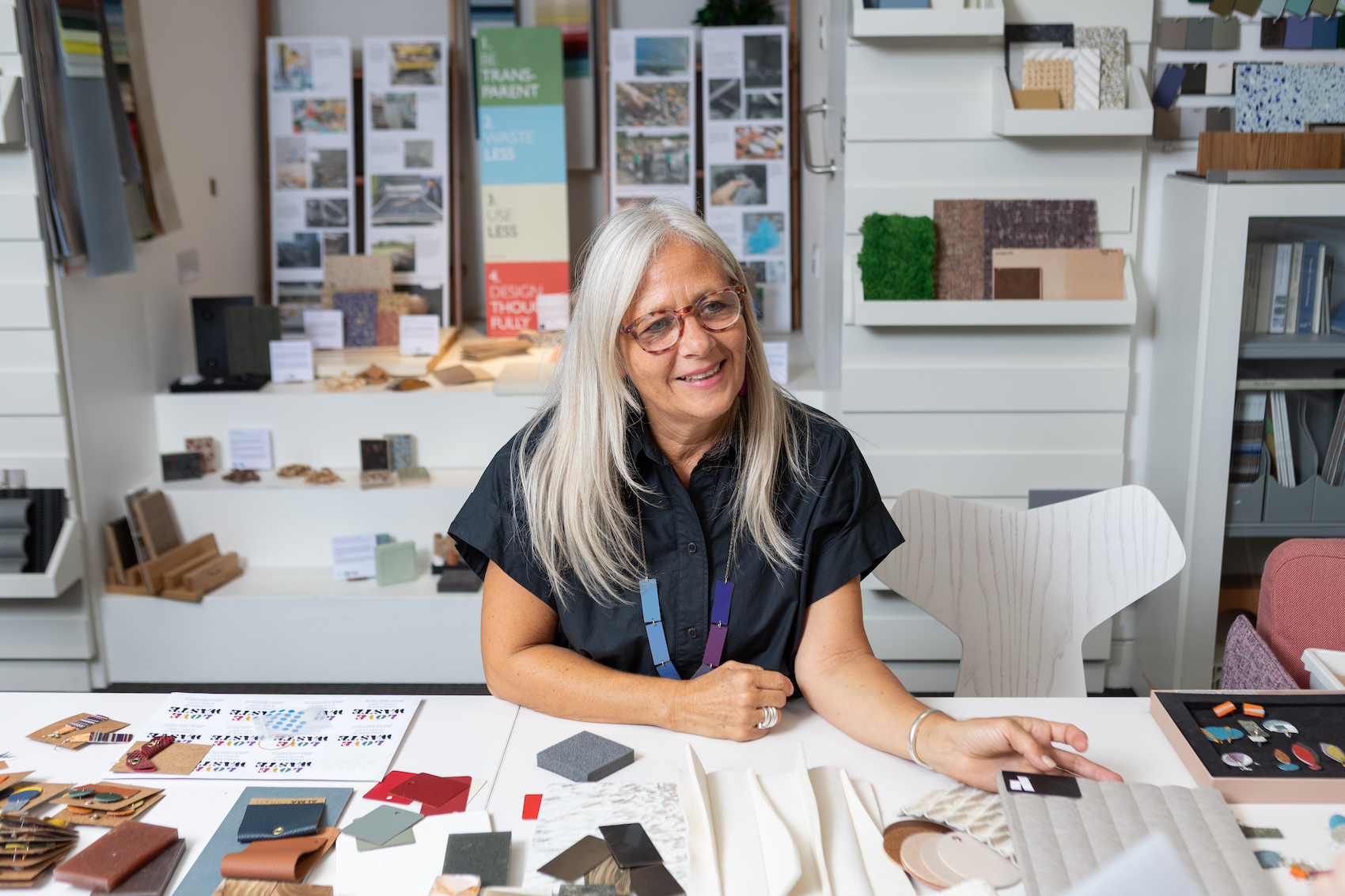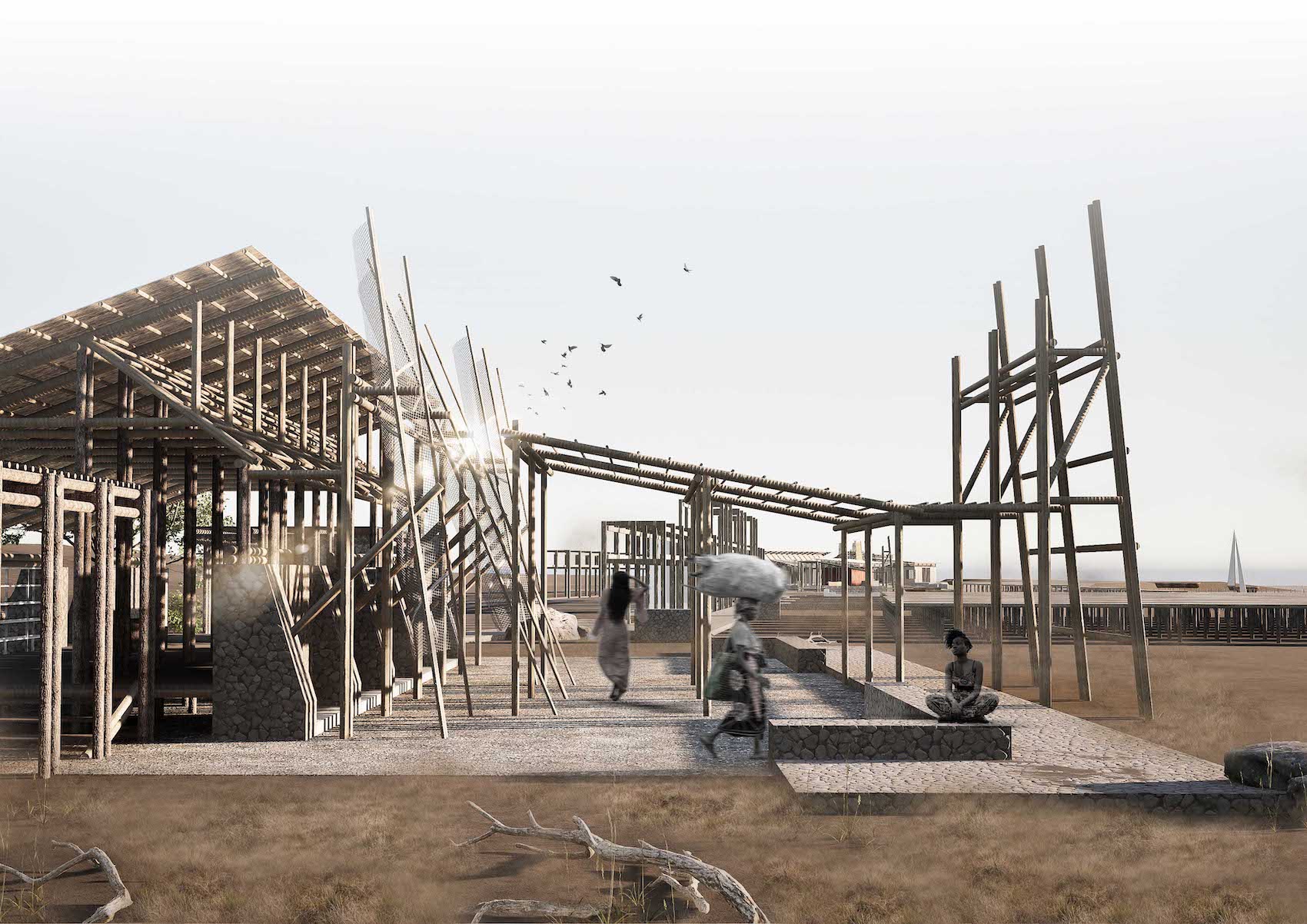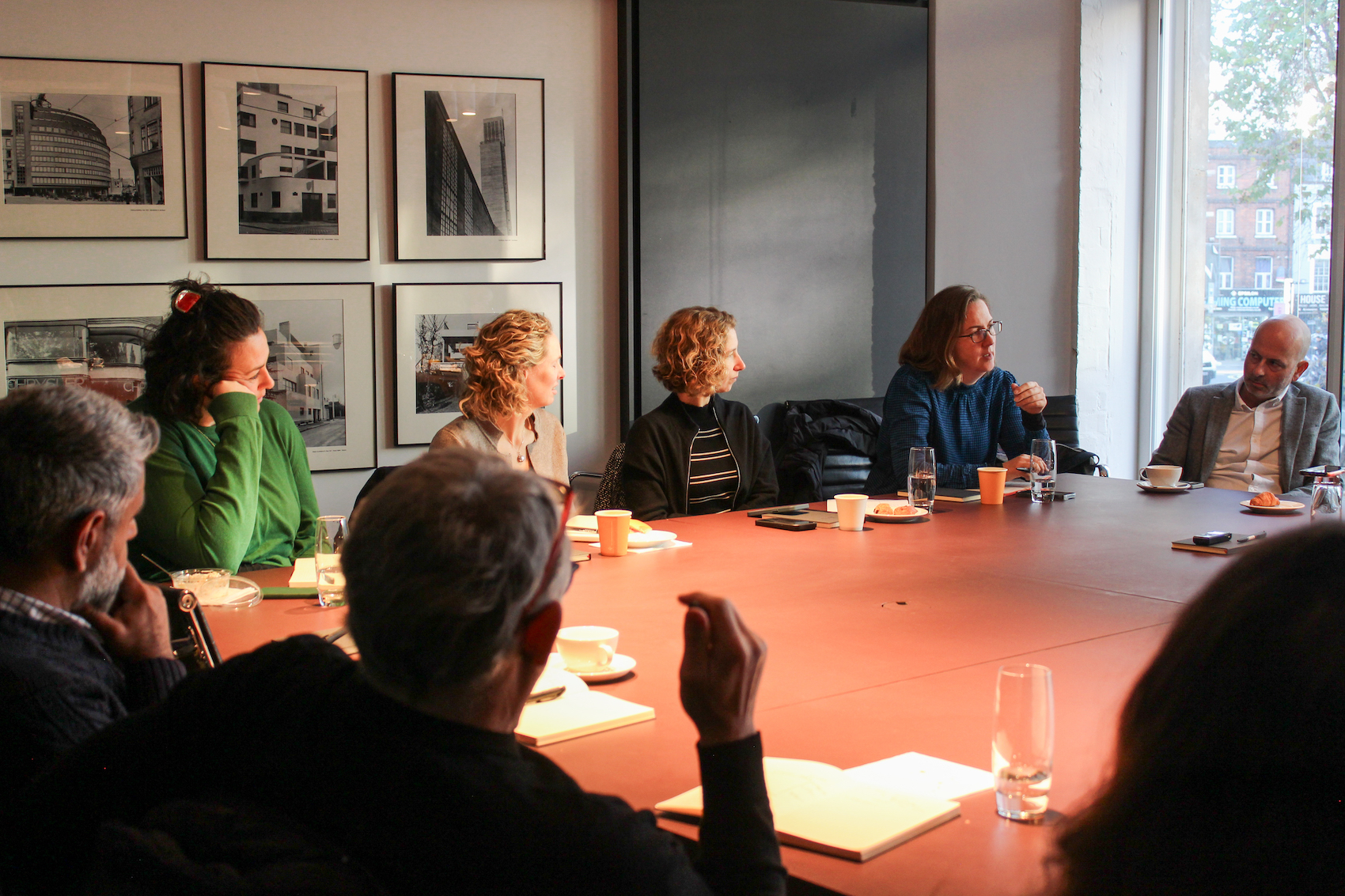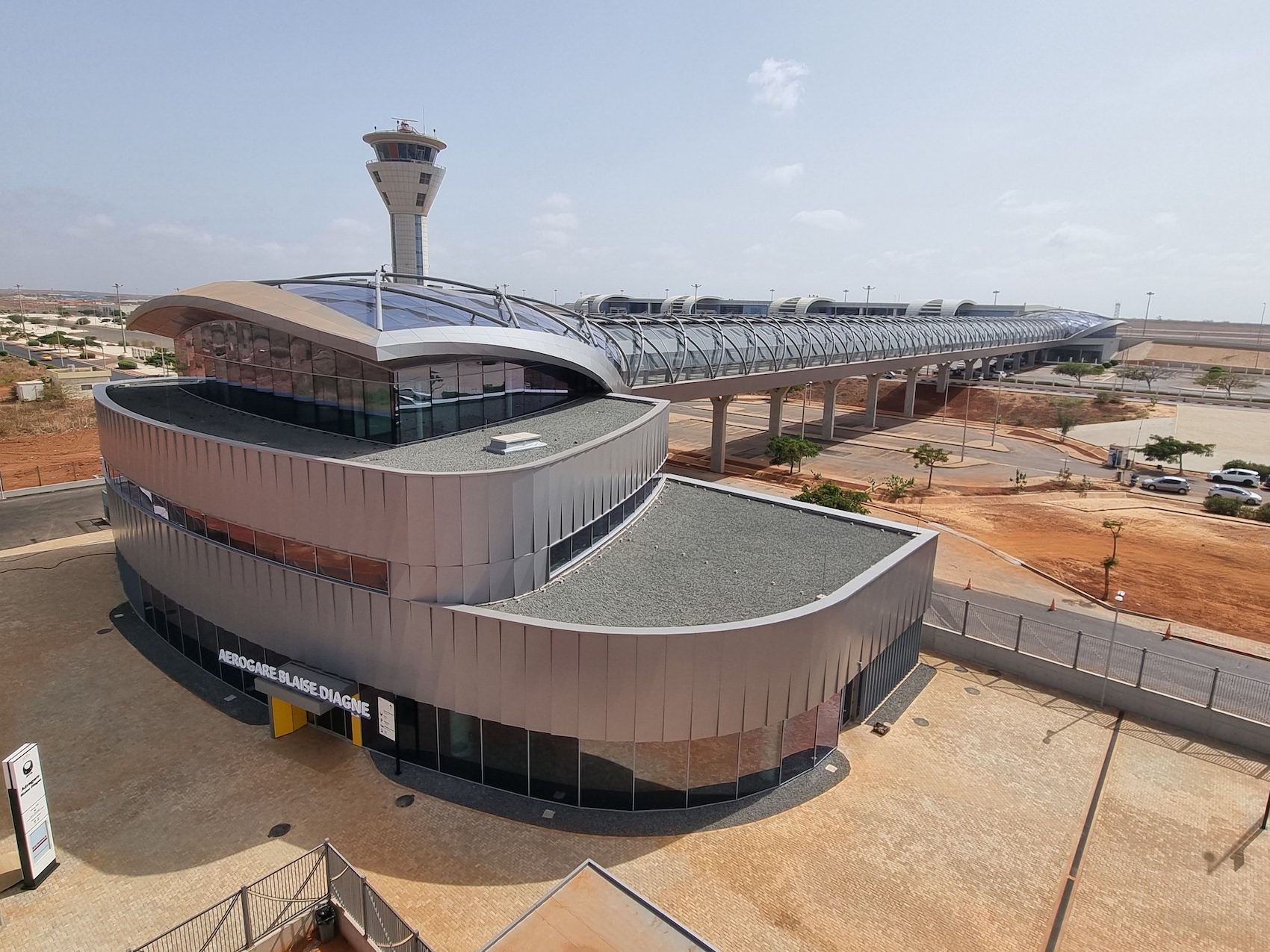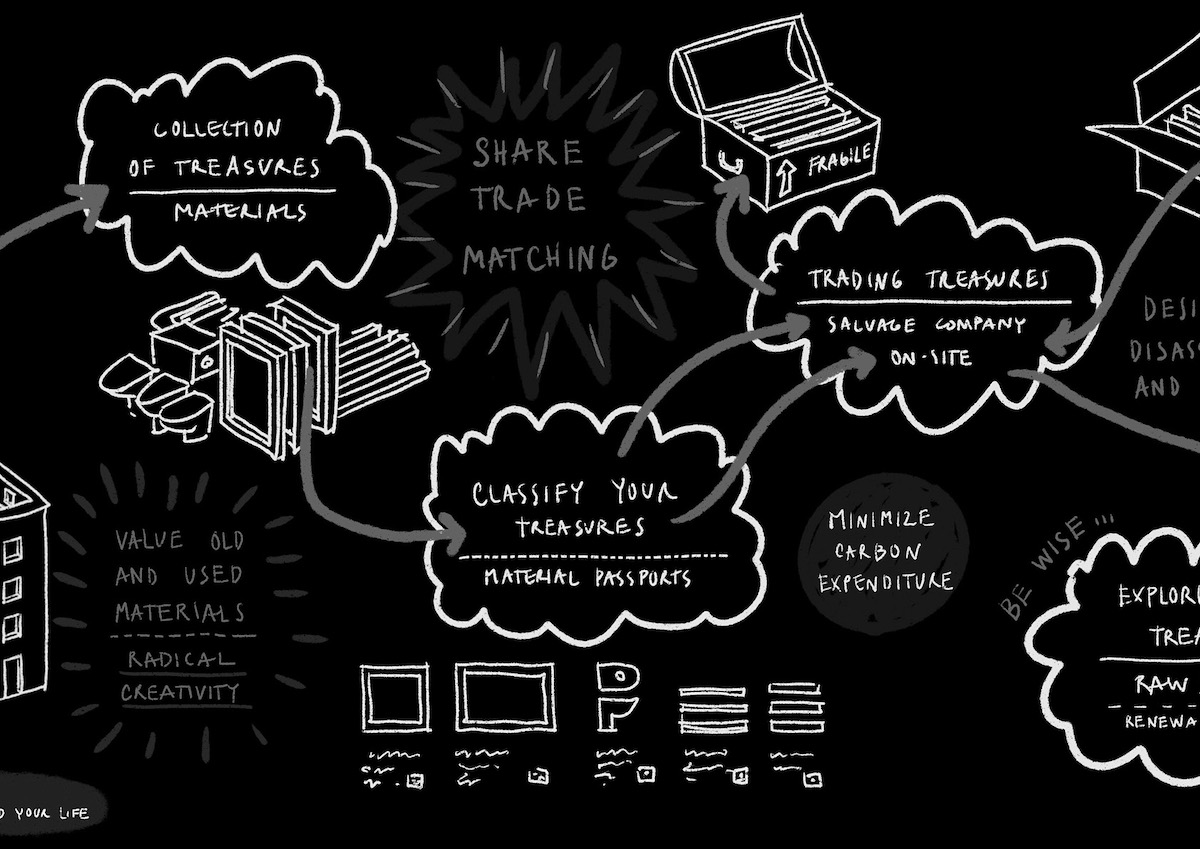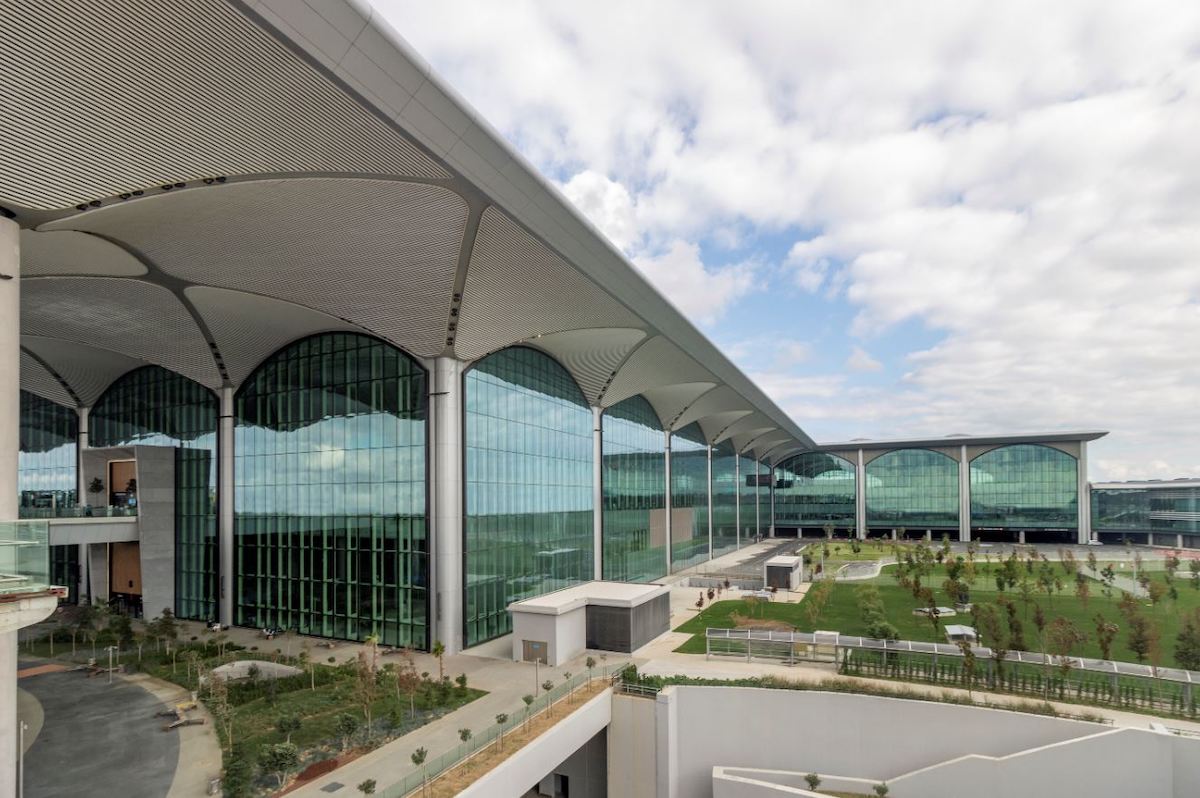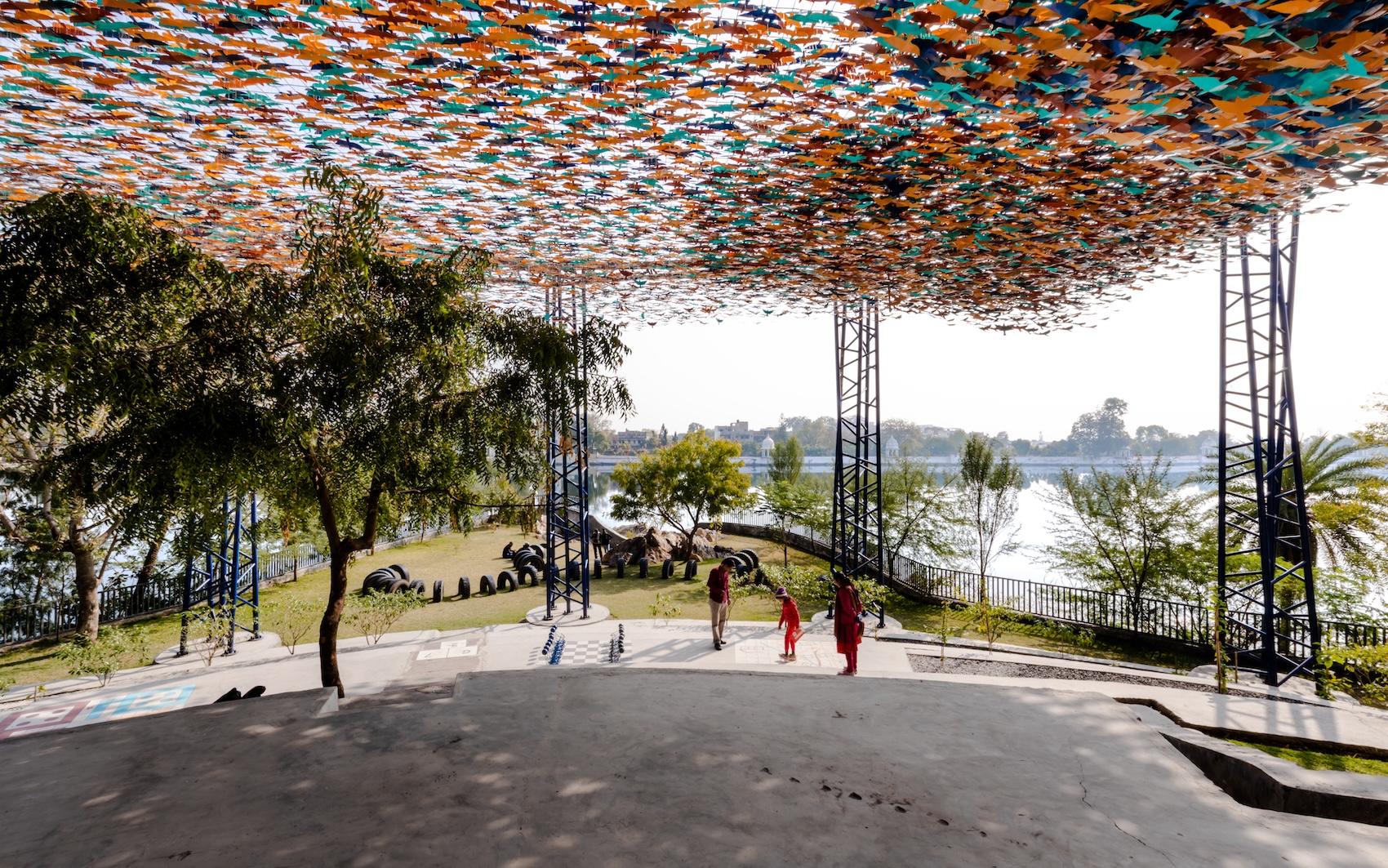From a section of Robin Hood Gardens, to the only Frank Lloyd Wright interior found outside of the US and a pair of Zaha Hadid-designed shoes: the new V&A East Storehouse by Diller Scofidio + Renfro offers gallery-goers a new museum experience.
At over ten metres high and eleven metres wide, the stage cloth for Le Train Bleu — Pablo Picasso’s vast, rarely seen stage cloth (and the largest Picasso work in the world_ — hangs in the V&A East Storehouse like a giant wave frozen mid-crest. Displayed for the first time in decades, this monumental canvas commands the soaring spaces of the new David and Molly Lowell Borthwick Gallery, part of a site that was once the nerve centre of the London 2012 Olympics.
Located at Here East, a media complex originally constructed for the 2012 Games in Hackney Wick and designed by HawkinsBrown, the Storehouse has been transformed into a vast cultural quarter. Now visitors can now wander through four levels of immersive storage, encountering objects that tell stories from ancient craftsmanship to contemporary creativity.
The largest Picasso work in the world – the rarely displayed stage cloth from the Ballets Russe Le Train Bleu – is now on display for the first time in over a decade in the David and Molly Lowell Borthwick Gallery.
Designed by Diller Scofidio + Renfro, with support from local architects Austin-Smith:Lord, V&A East Storehouse occupies a 16,000 square metre expanse (larger than 30 basketball courts) and houses more than 250,000 objects, 350,000 books, and 1,000 archival collections which have been relocated from Blythe House in West Kensington.
To make it work, steel walkways have been plugged into the original steel frame to create elevated paths through and around the space, allowing the building to accommodate over 1,000 visitors at a time, as well as provide easy access for staff and curators to objects they desire. Here East’s solid ground floor, designed for heavy trucks, also makes it ideal for supporting large, heavy objects, as well as for forklift trucks moving items around.
The visitor journey, however, starts with entry into the foyer and cafe area – a double-height area that beckons you onto a walkway driven through towering racks of storage, a narrow passage that leads into the 20-metre-high Weston Collections Hall.
Here, after moments of compression and decompression, the structure of the building opens up and reveals itself be a curatorial frame. This cavernous space, perhaps the most organised cabinet of curiosities around, is packed with objects: from paintings to musical instruments, to road signs and sections of buildings, artefacts stretching beyond in each direction across three floors and even beneath visitors’ feet, thanks to a section of glass floor revealing the layers of stored collections beneath. The sensation is one of stepping into a backstage realm, an alluring trespass into a world normally hidden from public view.
The layout itself inverts traditional museum norms: the most public spaces are embedded deepest within the building, while outer rings house semi-public archives and private zones for conservation, research, and storage.
V&A East Storehouse’s central Weston Collections Hall stretches across three levels, with over 100 frequently changing, curated mini displays literally ‘hacked’ into the ends and sides of storage racking—a strategy conceived by Diller Scofidio + Renfro to transform containers to display devices. London-based architecture and design studio IDK who has designed a flexible ‘kit of parts’ system for the mini displays to allow objects to come on and off display more easily and frequently.
“The Collections Hall invites visitors to explore pre-curated works surrounding them, not according to conventional curatorial logics or standard storage taxonomies, but guided instead by their own curiosities,” said Elizabeth Diller, founding partner of Diller Scofidio + Renfro.
Diller likened the experience to a “buffet” rather than a “chef’s menu,” encouraging curiosity, discovery, and personal connections rather than a predetermined sequence.
The stars of this show, however, are six monumental objects that reveal the depth and breadth of the V&A’s collections. Along with Picasso’s cloth hangs the only complete Frank Lloyd Wright interior found outside of the US: the 1930s Kaufmann Office, restored and reassembled after decades in storage. Nearby, a gilded 15th-century ceiling from the lost Torrijos Palace in Spain gleams under the lights, while Margarete Schütte-Lihotzky’s radical Frankfurt Kitchen speaks to modernist design’s domestic revolution.
It’s hard to comprehend actual architecture being on display in this way – with such large spatial installations usually reserved for world expos or biennials. But here in East London spatial remnants of the past, from across the world, can be experienced and enjoyed.
The inner layer of the Collections Hall exposes open crates to the public; the middle layer is a more traditional archive; and the outermost layer contains private spaces for museum staff, conservation work, research, and deep storage where objects are protected from excessive light, dust, and human contact.
From the local to the global, fragments of Robin Hood Gardens, once a social housing estate in Poplar, stand beside the ornate Mughal Agra Colonnade, offering a dialogue of architecture, identity, and belonging.
These, officially termed ‘Large Objects’ will be included in a programme of ‘Co-Productions’ that bring new voices to the fore. Artist Adam Williamson, working with Bow Arts in Tower Hamlets, has led a series of workshops with local community members to create fresh artworks inspired by the Agra Colonnade’s architecture and stone carving techniques, echoing the legacy of the original Mughal artisans. Complementing this is a new film by Akademi Dance, capturing a performance by young dancers from east London, many with South Asian heritage, as they respond to the Colonnade’s themes of identity and belonging.
The entrance hall runs the length of the museum’s glazed frontage, and is designed as a flexible, hardworking space with open-plan seating, lockers and cloakroom facilities, and a Café operated by the local independent business E5 Bakehouse. Furniture can be reconfigured to suit different uses including public seating, or informal events and workshops.
For the Robin Hood Gardens display, personal narratives emerge through a tapestry of oral histories, essays, photography, poetry, and films co-created with young east Londoners. Curated responses, from collages and paintings to ceramics and architectural models, have been developed through an eight-month mentoring scheme led by cultural curator Nate Agbetu and multidisciplinary artist Jamel Alatise, in collaboration with V&A East’s curatorial and engagement teams.
Despite its name, the Storehouse is aiming to be more than a repository: positioning itself as a working museum where conservators, technicians, and curators share their craft with visitors. Through glass walls and live demonstrations, guests can glimpse the intricate processes of object care and new acquisitions. The in-house photography team also captures artefacts using 3D modelling, infra-red scanning and photogrammetry, revealing hidden details of beloved and overlooked treasures.
The Storehouse’s is also offering visitors a new way to engage with its collection. Through ‘Order an Object’, visitors can browse the V&A’s vast collections online — more than 97,000 architecture-related items alone (with 72,045 available to view by appointment). With just a booking, anyone can choose up to five objects to view in person, whether it’s a pink silk taffeta Balenciaga dress from 1954, a centuries-old ceramic, or a pair of shoes designed by Zaha Hadid, in turn, transforming visitors into curators of their own museum experiences.
“Instead of the hard distinctions between storage and display, conservation and curation, back-of-house and front-of-house, V&A East Storehouse creates a new mixture,” said David Allin, principal at Diller Scofidio + Renfro.
“To realise the project, everyone had to step out of their comfort zone: curators became storage experts, technical services staff acted as exhibition designers, and we, as architects, learned to be collection managers. This experiment continues, with the public now asked to invent their own way of exploring the V&A’s collection of remarkable things.”
While the Storehouse currently holds around a quarter of a million objects, plans have been made to accumulate more, with capacity for future growth over the next five years, although space constraints will demand careful, strategic acquisitions.
The success of DS+R’s work is also in part due to how well designed Here East was in the first place. Credit must be given to Hawkins\Brown whose incredibly flexible building has metamorphosed multiple times: from Olympic media centre to offices, university hub, innovation centre for Ford, and camera lens manufacturer, to now also one of the most exciting museum spaces in the capital.
Credits
Architect
Diller Scofidio + Renfro
Local architect
Austin-Smith:Lord
Engineering, structure, services and lighting
Arup
Principal design advisers
ORSA
AV
Hoare Lea
Cost consultant
Gardiner & Theobald
Project manager
Colliers
Exhibition consultant (competition phase)
Studio Gardere


















